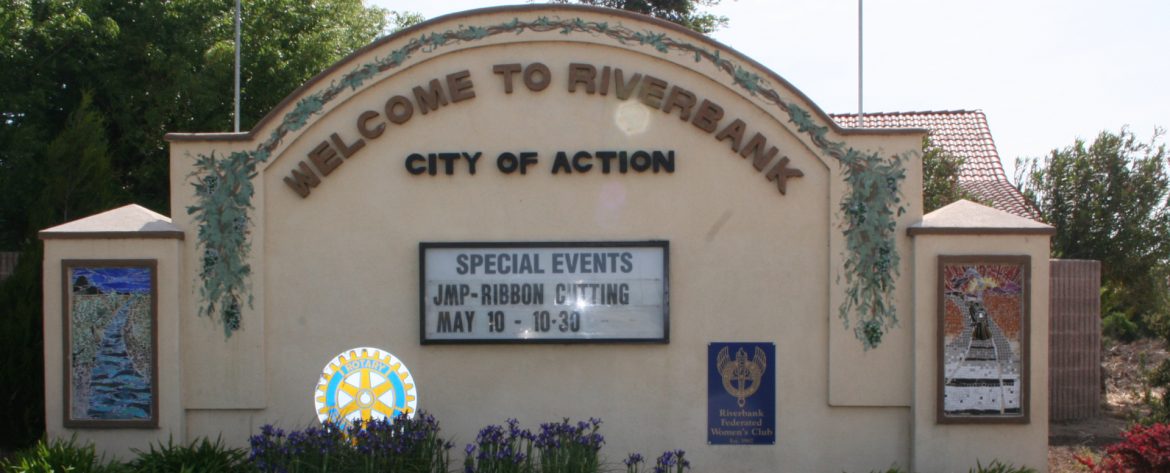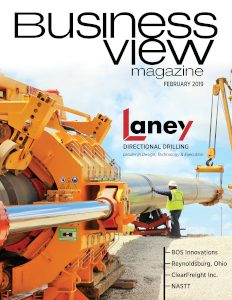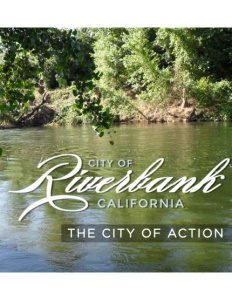Riverbank, California
The city of action
Business View Magazine interviews representatives of Riverbank, California, as part of our focus on best business practices of American cities.
Riverbank, a city of 25,000 in Stanislaus County, California, lies on banks of the Stanislaus River, in the heart of the Central San Joaquin Valley – five miles north of Modesto, 75 miles east of the San Francisco Bay Area, and 75 miles south of Sacramento. It was originally founded as a ferry crossing in the mid-1800s and was established as a town with the coming of the Santa Fe Railroad. Riverbank, California incorporated as a city in 1922, and its official slogan is “The City of Action.”
“Riverbank, California has a long history of being pretty aggressive with regard to new projects,” says City Manager, Sean Scully, “trying our best to take advantage of as many opportunities as possible and being open to lots of different ideas and concepts. And we’ve always been a place that’s been unafraid of large-scale projects that may be difficult for a small community to manage.”
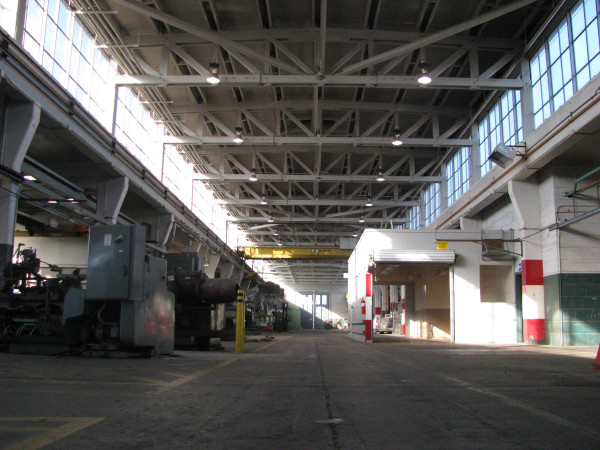
Industrial Complex Building
One such large-scale project that Scully says the City has been working on for awhile is the Riverbank Industrial Complex (RIC), formerly known as the Riverbank Army Ammunition Plant (RAAP), located at the southeastern edge of the City. The facility began operation in 1943 as an aluminum reduction plant for military supplies. It closed in 1944, and was used for storage until 1952, when the Norris Thermador Corporation was contracted by the U.S. Army to manage the property and produce ammunition supplies for the military. At the height of production, as many as 3,500 individuals were employed on the site. In the 1990s, as production waned, the Army leased excess space on the site to private tenants through the U.S. Army’s Armament Retooling and Manufacturing Support (ARMS) program. This allowed a variety of private business tenants involved in manufacturing and light industry to operate on the site and take advantage of its amenities.
The RIC is actually composed of two non-contiguous sites, totaling 173 acres. The Main Site, located at the southeast portion of the Riverbank, California city limits, comprises 146 acres and contains numerous structures, including the original aluminum smelting plant and military installation, as well as several structures that have been added since the early 1950s. Large portions of the Main Site remain undeveloped. Another parcel of about 27 acres is located just north of the city limits, along the Stanislaus River. It was formerly used as an evaporation and percolation pond for the treatment of industrial wastewater.
“About eight to ten years ago, the City made a decision to become the steward of the property, both in regard to the environmental cleanup and also taking this former base and retrofitting it into an industrial/business park with small- and medium-size businesses within what used to be the ammo depot,” Scully explains. “So, the City started out helping to coordinate the environmental cleanup and, a couple of years ago, the City Council decided on a specific plan for that ammo depot with the idea that this would be our major industrial location in the community for years to come.”
The Riverbank Army Ammunition Plant Base Reuse Plan, which was submitted to the Department of Defense in 2009, provides a clear vision and a roadmap for the future redevelopment of the facility, including the retention of current business tenants and aggressive recruitment of new business tenants to both the developed and undeveloped portions of the site. At buildout, a diverse mix of traditional manufacturing and new, “green” businesses are expected to share the site along with an offering of small office suites and limited convenience retail.
“Half of the property was deeded over to the City in 2017 and the other half, we expect to be conveyed in 2019,” Scully continues. “The idea, now, is for the City to enter into an agreement with some master industrial developer to expand the industrial use of the location, plus investment in the property to expand space for business. It’s been an amazing project because, at this point, we’re up to 40 businesses out there and in a town that has a limited amount of industrial space, it’s given us the ability to create a job center. Our goal is to have a good job center that provides a livable wage where people from Riverbank and the surrounding area can work and live close by, because in the central San Joaquin Valley, there’s still a large portion of our population that commutes to the Bay area for work, every day.”

Color Run
Another ongoing, large-scale project in Riverbank, California is the Crossroads West project, a proposed 390-acre addition to an existing subdivision on the west side of town. “Some of the same developers have proposed a Part Two to that project, which includes about 2,100 new homes of different types, plus about 56 acres of retail and service commercial,” Scully reports. “There’s a housing need throughout the Valley, and in Riverbank, especially, there’s a demand for new homes. And we really like the commercial component of the project, as well, because the more retail and commercial services we can bring to Riverbank, the less our residents have to drive to other communities for the goods and services they need.” Scully adds that the City is about three quarters of the way through the planning and environmental review stages of that project.
In regard to all projects that take place in Riverbank, California, Scully explains that while the City doesn’t have a formal policy for providing developers with incentives, it does negotiate on a per project basis. “If you look back over the history of our commercial success, you see that many projects, especially unique ones that we otherwise wouldn’t attract, there have been incentives negotiated – fee reduction or deferral, or flexibility with regard to development standards,” he states. “The City has always understood that in order to make something happen, you need to be flexible, because every project is different and you may just attract something that some other community may not be able to attract because they’re not flexible. We’re aware that it’s a competitive marketplace. If it’s not easy to get something done here, those opportunities go someplace where it is.”
“One thing that sets us apart from surrounding cities is that we’re into specific plans and development agreements to get all the details down, so there’s less public hearings later,” says Donna Kenney, Riverbank’s Planning Manager. “For example, our Crossroads West project – every time a new building came in, the architecture was staff-approved, based on the design guidelines that had been approved by Council, previously. So, it makes us more of an attractive place for businesses to locate. They see they can go to Riverbank, California, and within just two or three months, have all the architecture done and infrastructure approved and start building and move right in, when in one of our neighboring cities, they would approve the development and then every time a new building would come in, they would have to go back to public hearings to get the architecture done. So, that’s one incentive we can offer.”
“We would rather process projects under the specific plan model because we think that you create themes within areas of the community that are consistent versus parcel to parcel development, where you might end up with a hodgepodge that doesn’t feel cohesive,” Scully maintains. “Riverbank has done a really good job in having themed areas; the city is split up into different themed projects. It makes it easier for the developer because there’s a specific plan of what we’d like it to look like and all of the details that might otherwise be pushed down the road are, at least in concept, already agreed to.”
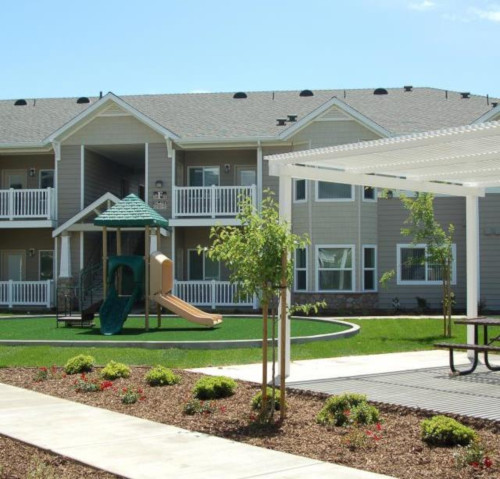 In addition to the market rate housing that the City already has, and will continue to add to at Crossroads West, as well as in the Bruinville area in the east side of town, Riverbank also has two affordable housing projects. “The newest one has 72 units and a community center,” Kenney notes. “When they opened up, we had over 1,300 applications. They’re up to four-bedroom apartments and the largest ones rent for about $580 per month.”
In addition to the market rate housing that the City already has, and will continue to add to at Crossroads West, as well as in the Bruinville area in the east side of town, Riverbank also has two affordable housing projects. “The newest one has 72 units and a community center,” Kenney notes. “When they opened up, we had over 1,300 applications. They’re up to four-bedroom apartments and the largest ones rent for about $580 per month.”
“They’re both very affordable for the area,” says Scully. “They look fantastic and are well-managed, too. The Council is very committed to a range of housing possibilities for its residents. Sometimes, suburban communities just want the basic, single-family home set-up, but the City of Riverbank has a very aggressive, multi-disciplinary, affordable housing strategy. We have our own housing program, where we do low income loans; we have a first-time home-buyer program; we have a housing authority that runs a number of affordable units for our seniors. So, it’s a place where there’s a variety of different habitations and we’re very proud of that. We find that people that move to Riverbank that didn’t grow up here like Riverbank for a couple of reasons: it’s close to a number of larger population centers, but still has sort of a small town vibe, and it is a safe and clean community with good schools The housing here seems to go very quickly. Also, the cost of living in the Central Valley is far lower than it is in the Bay area. Prices there are sky high and the Bay area has only so much available land. So, it’s not like the Valley where we’re much more spread out.”
While the median age of Riverbank is in the low 30s, the City has also become a retirement destination for seniors from the Bay area. “We have a subdivision called Diamond Bar West,” says Kenney. “That’s a 46-house subdivision; the houses are on 5,000-sq.-ft. lots and they’re around 1,600–2,000 square feet. The developer thought it would appeal to families with young children because he was selling at $299-300,000 for a brand new house with some really nice amenities, inside. But then, he was finding that it was retiring couples from the San Francisco Bay area that were buying these homes. They could sell their house in San Francisco for $700-800,000, come out here and buy a really nice house for $300,000, retire, and still be two hours from Tahoe, two hours from San Francisco, and two hours from Yosemite – right in the middle of everything.”
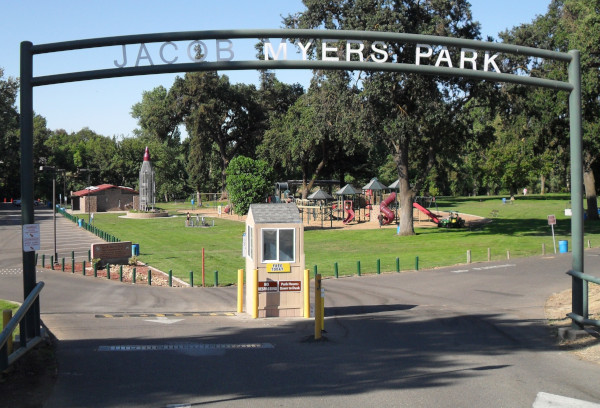
Jacob Myers Park
While providing many different housing options, Riverbank also maintains its amenities for the benefit of all its residents, young and old; one of which is Jacob Myers Park, which Kenney says is the City’s “crown jewel.” “It was an Army Corps of Engineers property that had fallen into a state of disrepair,” says Scully. “It was not a place where you wanted to go. The community designed a master plan for it, and for the last many years, we’ve been adding to it – trails, gazebos, upgraded boat docking facilities, parking, children’s play areas. Now it is a place that is packed during the summer months. It’s really beautiful.” “There’s also our sports complex on the west side of town,” says Kenney, “eleven acres of ball fields and parking, and with this new Crossroads West expansion, we’ll be doubling the side of that park and bringing in even more amenities.”
“We’re really proud of our recreation program,” Scully adds. “During the Recession, many communities cut recreation, substantially, if not completely. It wasn’t viewed as an essential service. But this community’s Council resisted doing that to our benefit. We have a huge catalogue of classes, events, things that people can do, teen trips, open gyms. The only reason we’re able to do that is that the City said that they believed that having broad recreation activities in the community is really an important part of its identity as a city. So, they were not willing to let that go.”
“This is a place that wants to take advantage of every opportunity provided it’s right for the community,” says Scully, in conclusion. “We’re a community that’s active and aggressive in pursuing projects and services that make our community better. And we’re very proud to be ‘The City of Action.’”
Check out this handpicked feature on Reynoldsburg, Ohio – The city of respect.
AT A GLANCE
WHO: Riverbank, California
WHAT: A city of 25,000
WHERE: On the Stanislaus River, in the Central San Joaquin Valley
WEBSITE: www.riverbank.org
